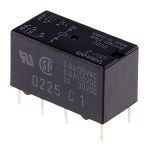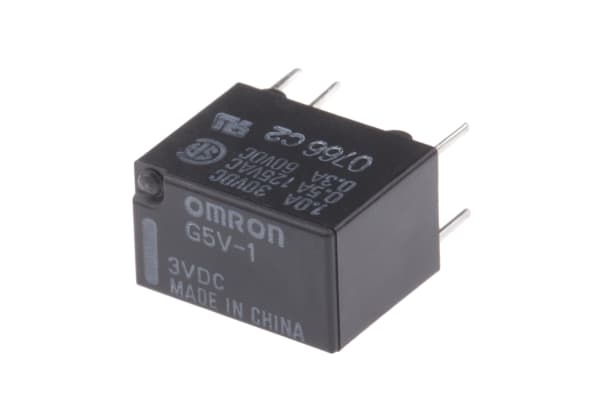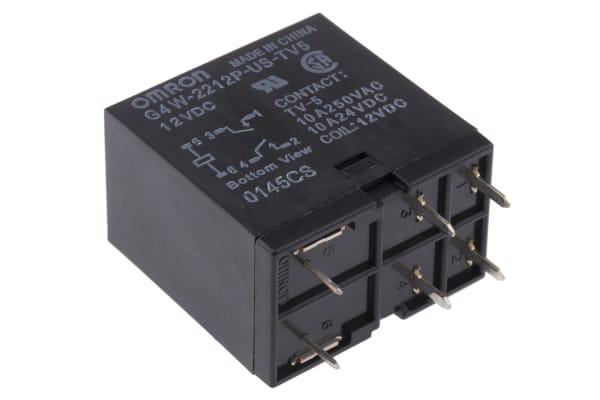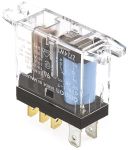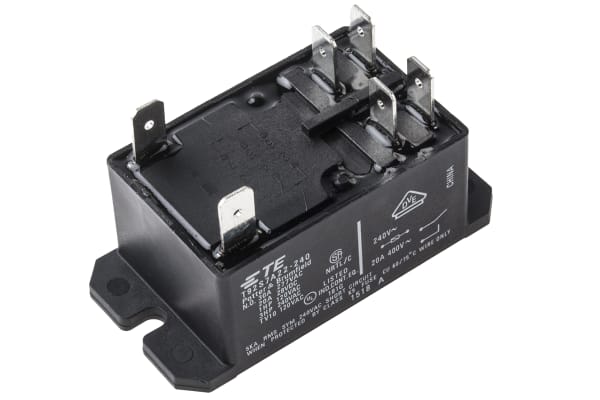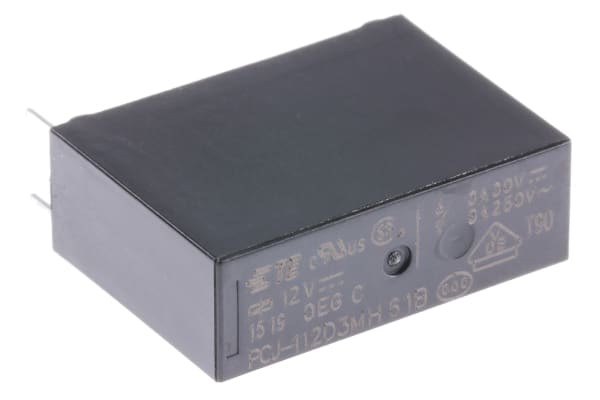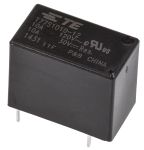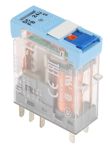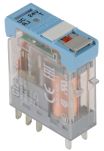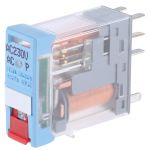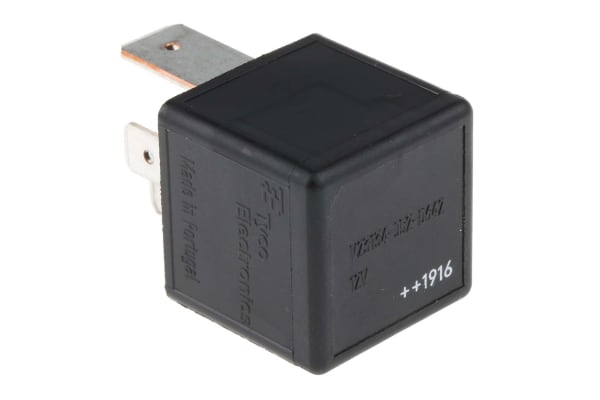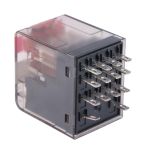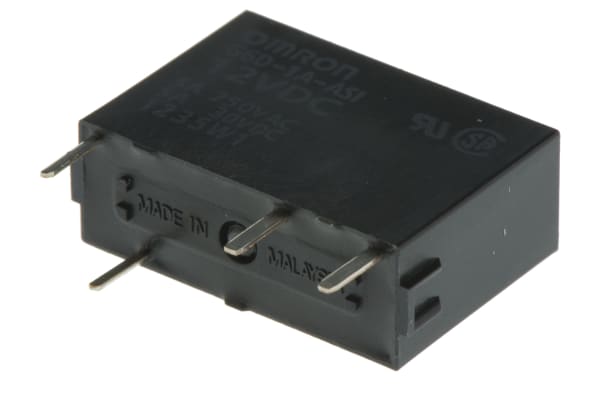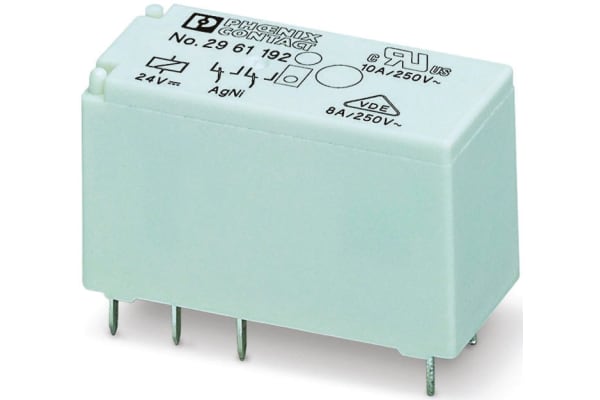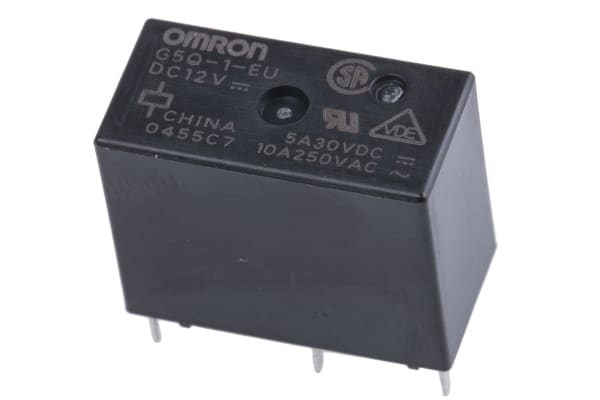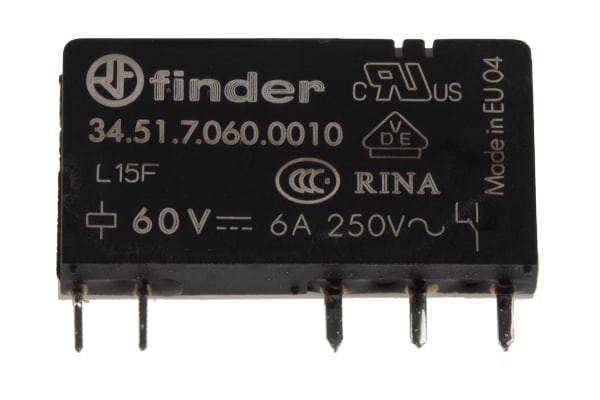Non-Latching Relays
Relays are electrical switches that are operated by electrical impulses with the primary function to open and close a circuit, they can also be referred to as industrial switches. There are 2 main types available, latching and non–latching relays.How do non-latching relays work?Non-latching relays are in a normally closed (NC) position and will stay in this state without power. When power passes through the circuit, the relay switched to a normally open (NO) position by using an internal coil to generate a magnetic force, holding this NO position. Once the current is turned off, it returns to the NC position. This makes non-latching relays well suited to push-button applications like keyboards and micro-controller input buttons.What are non-latching relays used for?Non-latching relays are highly durable and versatile components, making their performance long lasting and suitable for use in a wide range of applications, such as:Automotive enginesHousehold appliancesIndustrial machineryMedical equipmentTelecommunications equipmentWhat is the difference between latching and non-latching relays?Both types of relays in similar in design and function, however, a significant difference between them is that a latching relay will remain in the last position it when it was last powered, whereas a non-latching goes back to its normal position. This makes each more type of relay suitable for different applications. Considerations when selecting a relayWhen choosing a relay, it is important to consider a number of specifications to ensure it is fit for purpose, some factors include:Coil voltage – the required voltage to actuate the switching mechanism. If a voltage is too high this could damage the components, if it is too low then it will not actuate. Contact configuration – This is the state the contacts are in without power. For example SPST, single pole single throw.Contact material – the relay contacts are available in many materials that have certain properties. Common materials are gold, silver, tin oxide and nickel Coil power – the amount of power (watts) the coil operates at. This must match the power in the circuit for correct function. Coil resistance – the amount of resistance (ohms) in the circuit that the coil creates.
-
Omron, 9V dc Coil Non-Latching Relay DPDT, 2A Switching Current PCB Mount, 2 Pole, G5V-2 9DC
IDR279,846.52Pack (1 Pack of 5) -
Omron, 3V dc Coil Non-Latching Relay SPDT, 2A Switching Current PCB Mount Single Pole, G5V-1 3DC
IDR222,157.02Pack (1 Pack of 5) -
Omron, 12V dc Coil Non-Latching Relay DPNO, 10A Switching Current PCB Mount, 2 Pole, G4W-2212P-US-TV5 12DC
IDR89,576.06 -
Omron, 24V dc Coil Non-Latching Relay SPNO, 16A Switching Current PCB Mount Single Pole, G2RL-1A4-E 24DC
IDR50,871.65 -
Omron, 24V dc Coil Non-Latching Relay SPDT, 16A Switching Current PCB Mount Single Pole, G2RL-14-E 24DC
IDR63,143.78 -
Omron, 5V dc Coil Non-Latching Relay SPDT, 10A Switching Current Panel Mount Single Pole, G2R1T5DC
IDR103,001.98 -
Omron, 12V dc Coil Non-Latching Relay SPNO, 10A Switching Current PCB Mount Single Pole, G2R-1A 12DC
IDR57,374.83 -
TE Connectivity, 240V ac Coil Non-Latching Relay DPNO, 30A Switching Current Flange Mount, 2 Pole, T92S7A22-240=T92
IDR489,731.41 -
TE Connectivity, 12V dc Coil Non-Latching Relay SPNO, 3A Switching Current PCB Mount Single Pole, PCJ-112D3MH,301
IDR26,117.61 -
TE Connectivity, 12V dc Coil Non-Latching Relay SPNO, 10A Switching Current PCB Mount Single Pole, T77S1D10-12
IDR38,494.63 -
Releco, 24V dc Coil Non-Latching Relay DPDT, 5A Switching Current PCB Mount, 2 Pole, C12A21X24D
IDR211,668.02 -
Releco, 24V ac/dc Coil Non-Latching Relay DPDT, 5A Switching Current PCB Mount, 2 Pole, C12A21BX24AD
IDR252,889.79 -
Releco, 230V ac Coil Non-Latching Relay DPDT, 5A Switching Current PCB Mount, 2 Pole, C12A21X230A
IDR391,029.92 -
TE Connectivity, 12V dc Coil Automotive Relay SPNO, 50A Switching Current Panel Mount Single Pole, V23134J0052D642
IDR147,894.90 -
-28.50%
TE Connectivity, 230V ac Coil Non-Latching Relay 4PDT, 6A Switching Current PCB Mount, 4 Pole, PT570T30 8-1415001-1
IDR194,675.84IDR141,706.39 -
Omron, 12V dc Coil Non-Latching Relay SPNO, 5A Switching Current PCB Mount Single Pole, G6D-1A-ASI DC12
IDR116,323.01 -
Finder, 230V ac Coil Non-Latching Relay SPDT, 16A Switching Current PCB Mount Single Pole, 40.61.8.230.0000
IDR222,576.58 -
Finder, 110V ac Coil Non-Latching Relay SPDT, 16A Switching Current PCB Mount Single Pole, 40.61.8.110.0000
IDR148,314.46 -
Omron, 24V dc Coil Non-Latching Relay SPNO, 15A Switching Current PCB Mount Single Pole, G5CA-1A-E DC24
IDR58,423.73 -
Phoenix Contact, 12V dc Coil Non-Latching Relay SPDT, 50mA Switching Current PCB Mount Single Pole, 2961532
IDR155,446.98 -
Phoenix Contact, 24V dc Coil Non-Latching Relay SPDT, 50mA Switching Current PCB Mount Single Pole, 2961545
IDR113,595.87 -
TE Connectivity, 230V ac Coil Non-Latching Relay DPDT, 12A Switching Current DIN Rail, 2 Pole, PT2S7TD0 6-1415074-1
IDR462,774.68 -
Omron, 12V dc Coil Non-Latching Relay SPDT, 10A Switching Current PCB Mount Single Pole, G5Q-1-EU 12DC
IDR26,327.39 -
Finder, 60V dc Coil Non-Latching Relay SPDT, 6A Switching Current PCB Mount Single Pole, 34.51.7.060.0010
IDR149,048.69



